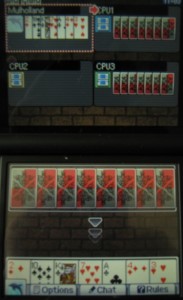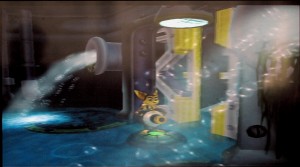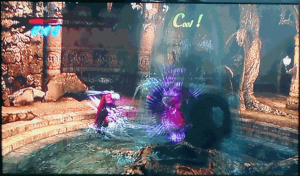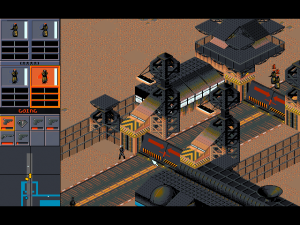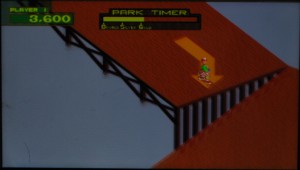278th played so far
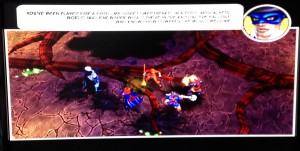
Genre: Strategy/Role-Playing
Platform: PC
Year of Release: 2005
Developer: Irrational Games
Publisher: Digital Jesters/Electronic Arts
Time for some more insanity. Today’s installment, Freedom Force vs The 3rd Reich, fits in with the recent rise of superhero movies, and plays with its stereotypes. Speechbubbles, comic book looks, hammy acting and over the top storylines, it’s all in there.
We’ve not played many superhero games yet, but then again, there aren’t many, with only City of Heroes coming to mind as a notable game we’ve played for the blog. Not to say that there aren’t other, but while in other circumstances heroes like Infamous‘ Cole would become one, they don’t contain many elements of the genre or its aesthetics.
Our Thoughts
It’s amazing how much a game’s setting can affect how it feels and plays and how we judge it at the end. In the case of Freedom Force, it’s difficult to look past the setting, so for now we won’t… yet.
The game is superheroes from beginning to end. The cutscenes have some of the comic elements. There are the cheesy intros. There are the overly elaborate background stories. There are the team ups. These people have seen plenty X-Men movies. There are even the speech bubbles when the characters speak. And the voice acting… hammiest you’ve ever heard, trust me.
And as funny as it all comes across, this is all played straight. It may come across as funny sometimes, and certainly the story elements are fun in how over the top it is, it goes for the serious storylines and serious dialogue. It’s played straight, which makes the game more engaging. You’re still going through the game to follow the storyline. Just one that, by genre, seems over the top in so many places.
However, the story doesn’t dominate to the point that there’s no game to speak of. A lot of it is still just a tactical RPG – pausable real-time as we like to call it when we want to sound sophisticated. It plays, at its most basic, the same as something like Baldur’s Gate II, giving you a chance to give your orders but mostly having it play out in real time.
The similarities don’t go that far beyond the basic controls, though, and it’s clear the game doesn’t mean to. The missions are essentially linear – no branching plots that we could find – but are supplemented during the mission with secondary objectives to play through. The only reward for them is prestige at the end, so they’re far from mandatory – but still fun to try to complete and at times useful.
Prestige is one of the currencies you’ll be collecting. In this case, prestige is used to ‘hire’ new superheroes – or rather, to become renowned enough that they want to be part of your team. Apparently you might lose them too if you lose too much prestige, but we didn’t notice that.
The other – basic – RPG mechanic is that of leveling. All your heroes gain XP from taking part in missions (and less so when they’re not). Levelling gives you skill points you can use to gain new powers or improve them. The options are not too complicated, but complex enough to allow for some choices and allow you to aim your character somewhat. Their specialism won’t change much, but you can get some options in.
Where it shines, though, is in game. The missions aren’t very difficult, but they’re varied, going (a bit) beyond ‘kill everything’, with various obstacles in the way and things to avoid. The powers you can use shine here as well. Plenty are of the ‘hit things’ and ‘shoot things’ variety, with some form of damage being applied, but those are only part of the equation. Just as useful are the other powers you can use on your enemy. Status attacks are quite useful, compared to most game, with them usually being effective and recharge rates fast enough that you can keep using them. It’s their creativity that matters more though – you can warp enemies out of existence for a while, seduce them or push them away from you some distance.
Another area where this game sets itself apart from other games like City of Heroes is the use of background stories. This was touched on earlier but I figured it warranted more of a mention. The main backing for all concerned is that these superheroic abilities were granted by an alien Energy X which was directed towards the Earth. Some took it on to become villains and others as heroes. The sheer variety of reasons why people became certain heroes makes shows this off to be the work of a group that know their comic books. An example that comes to mind is of Eve… whose origin was not exactly known. Then there is the Green Genie; a girl who was sold into marriage and kept under house arrest by her father, she gained her powers in defense of the one person who tried to aid her escape. All of these videos are also available on YouTube.
Probably as much of a highlight, though, comes from the interaction with the environment. Mostly everything is destructible, but you won’t want to do too much of that. More fun is how you move around them. Although mostly playing as a 2D game, there are 3D elements. Some heroes can fly and others are good climbers, meaning you can make use of that to avoid enemies, reach them more easily or to explore different routes. Others, such as the Ant, dig instead, using that get past doors and other barriers.
They’re not huge changes, but taken together add up to a very playable game, with the superhero powers fuelling a lot of the slightly different battle system. You get your options – more than just ‘hit sword’, ‘shoot bow’ or similar – and the variety it allows makes the levels more fun to play.
Final Thoughts
It’s difficult to put into words what makes this game as entertaining. It’s a combination of setting, gameplay, variety and missions. It works though. It’s a lot of fun to play and enough to pull you in to keep going.
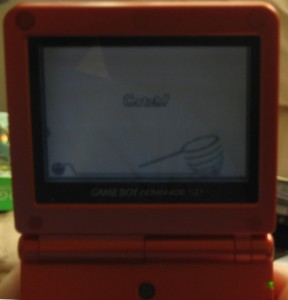 Genre: Action
Genre: Action